-
 Bitcoin
Bitcoin $117600
0.25% -
 Ethereum
Ethereum $4424
0.10% -
 XRP
XRP $3.101
0.50% -
 Tether USDt
Tether USDt $1.001
-0.01% -
 BNB
BNB $836.2
1.26% -
 Solana
Solana $188.8
2.11% -
 USDC
USDC $1.000
0.01% -
 Dogecoin
Dogecoin $0.2301
0.57% -
 TRON
TRON $0.3485
-1.00% -
 Cardano
Cardano $0.9209
-1.34% -
 Hyperliquid
Hyperliquid $46.72
-1.19% -
 Chainlink
Chainlink $22.62
4.84% -
 Stellar
Stellar $0.4275
-0.38% -
 Sui
Sui $3.761
1.91% -
 Bitcoin Cash
Bitcoin Cash $586.7
-0.25% -
 Ethena USDe
Ethena USDe $1.001
0.01% -
 Hedera
Hedera $0.2510
2.06% -
 Avalanche
Avalanche $24.21
2.22% -
 Litecoin
Litecoin $119.7
1.07% -
 Toncoin
Toncoin $3.450
1.06% -
 UNUS SED LEO
UNUS SED LEO $9.411
-0.93% -
 Shiba Inu
Shiba Inu $0.00001298
1.20% -
 Uniswap
Uniswap $10.98
3.25% -
 Polkadot
Polkadot $3.961
2.16% -
 Dai
Dai $1.000
0.00% -
 Bitget Token
Bitget Token $4.642
0.95% -
 Cronos
Cronos $0.1514
0.57% -
 Ethena
Ethena $0.7290
3.78% -
 Monero
Monero $254.1
7.69% -
 Pepe
Pepe $0.00001102
2.47%
Cross-chain Bridge Jargon: Professional Terminology for Transferring Assets Across Networks
Cross-chain bridges enable asset transfers between blockchains, using wrapped tokens, lock-and-mint mechanisms, and validator nodes to ensure secure, interoperable transactions.
May 10, 2025 at 02:14 am
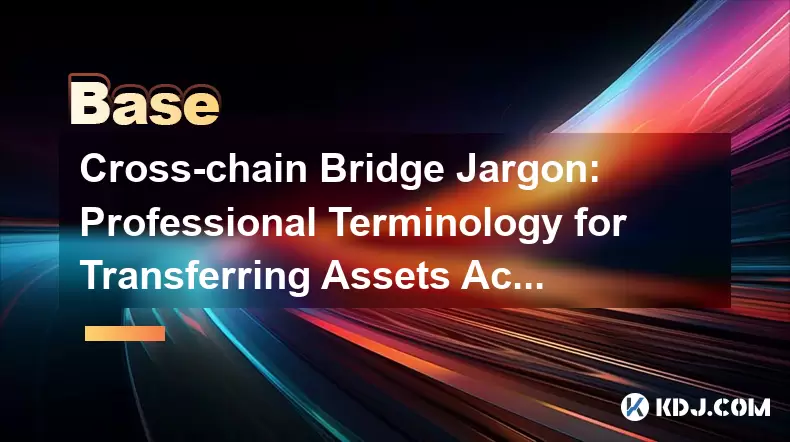
In the world of cryptocurrencies, cross-chain bridges play a pivotal role in enabling the seamless transfer of assets across different blockchain networks. Understanding the jargon associated with these bridges is essential for anyone looking to navigate the complexities of cross-chain transactions. This article delves into the professional terminology used in the realm of cross-chain bridges, providing clarity on key concepts and terms.
What is a Cross-Chain Bridge?
A cross-chain bridge is a protocol or platform that facilitates the transfer of tokens or assets from one blockchain to another. These bridges are crucial for enhancing interoperability between disparate blockchain ecosystems, allowing users to leverage the benefits of multiple networks. By understanding the terminology associated with cross-chain bridges, users can better navigate these systems and make informed decisions.
Key Components of Cross-Chain Bridges
Cross-chain bridges consist of several key components, each with its own specific terminology.
Wrapped Tokens: These are tokens that represent an asset from one blockchain on another. For instance, Wrapped Bitcoin (WBTC) is a token on the Ethereum blockchain that represents Bitcoin. Wrapped tokens are essential for cross-chain transactions as they allow assets to be used on networks where they are not natively supported.
Lock and Mint Mechanism: This is a common method used by cross-chain bridges. When an asset is transferred, it is locked on the original blockchain, and an equivalent amount of a new token is minted on the destination blockchain. Once the transaction is reversed, the minted tokens are burned, and the original asset is unlocked.
Validator Nodes: These nodes play a critical role in ensuring the security and integrity of cross-chain transactions. Validator nodes are responsible for verifying the transactions and maintaining the bridge's operation. The term decentralized validator network refers to a system where multiple validator nodes work together to secure the bridge.
Types of Cross-Chain Bridges
There are several types of cross-chain bridges, each designed to meet different needs and use cases.
Centralized Bridges: These bridges are operated by a single entity or organization. While they can be more straightforward to use, they come with the risk of centralization, as the operator has control over the bridge. The term custodial bridge is often used to describe centralized bridges, as users must trust the operator to hold their assets securely.
Decentralized Bridges: In contrast, decentralized bridges operate without a central authority. They rely on smart contracts and validator nodes to facilitate cross-chain transfers. The term non-custodial bridge is used to describe these systems, as users maintain control over their assets throughout the transfer process.
Hybrid Bridges: These bridges combine elements of both centralized and decentralized systems. They may use a centralized operator for certain functions while relying on decentralized components for others. The term semi-custodial bridge is sometimes used to describe hybrid bridges.
Technical Terms and Concepts
Navigating cross-chain bridges requires familiarity with various technical terms and concepts.
Atomic Swaps: These are peer-to-peer exchanges of cryptocurrencies from different blockchains without the need for a third party. The term atomic refers to the fact that the swap either happens completely or not at all, ensuring that neither party is at risk of losing their assets.
Interoperability Protocols: These are standards or frameworks designed to facilitate communication and interaction between different blockchains. Examples include Cosmos' IBC (Inter-Blockchain Communication) Protocol and Polkadot's Cross-Chain Messaging Format (XCM). Understanding these protocols can help users appreciate the underlying technology that enables cross-chain bridges.
Bridge Fees: These are the costs associated with using a cross-chain bridge. Fees can vary depending on the bridge and the networks involved. The term gas fee is often used in the context of Ethereum-based bridges, referring to the cost of executing transactions on the Ethereum network.
Security and Risks
Security is a paramount concern when using cross-chain bridges, and understanding the associated risks is crucial.
Smart Contract Vulnerabilities: Many cross-chain bridges rely on smart contracts, which can be susceptible to bugs or exploits. The term exploit refers to a method used to take advantage of a vulnerability in a smart contract, potentially leading to the loss of assets.
Liquidity Risks: Cross-chain bridges often require a pool of assets to facilitate transfers. If the liquidity pool is not sufficiently large, it can lead to slippage, where the actual amount received in a transaction differs from the expected amount.
Regulatory Risks: The regulatory environment surrounding cross-chain bridges can be complex and varies by jurisdiction. The term compliance refers to adherence to these regulations, and non-compliance can result in legal repercussions.
Practical Applications and Use Cases
Cross-chain bridges have a wide range of practical applications and use cases within the cryptocurrency ecosystem.
Decentralized Finance (DeFi): Cross-chain bridges enable users to access DeFi platforms across different blockchains. For example, a user might use a bridge to transfer assets from Ethereum to Binance Smart Chain to take advantage of lower transaction fees on DeFi applications.
Asset Diversification: Investors can use cross-chain bridges to diversify their portfolios across multiple blockchains. This can help mitigate risks associated with being overly concentrated in a single network.
Gaming and NFTs: Cross-chain bridges facilitate the transfer of non-fungible tokens (NFTs) and other gaming assets between different blockchain ecosystems. This enhances the interoperability of gaming platforms and allows for a more seamless user experience.
Frequently Asked Questions
Q: What are the main advantages of using a cross-chain bridge?
A: The main advantages include enhanced interoperability between different blockchain networks, the ability to access a wider range of DeFi applications, and the opportunity to diversify assets across multiple chains. Cross-chain bridges also enable users to take advantage of the unique features and benefits of different blockchain ecosystems.
Q: How can I ensure the security of my assets when using a cross-chain bridge?
A: To ensure the security of your assets, it is important to choose a reputable and well-audited bridge. Research the bridge's track record and the security measures in place, such as the use of decentralized validator nodes and smart contract audits. Additionally, always double-check the addresses and transaction details before initiating a transfer.
Q: Are there any alternatives to cross-chain bridges for transferring assets between blockchains?
A: Yes, alternatives include atomic swaps, which allow for peer-to-peer exchanges without a third party, and interoperability protocols like Cosmos' IBC and Polkadot's XCM, which facilitate communication between blockchains. However, these alternatives may have different use cases and limitations compared to cross-chain bridges.
Q: Can I use a cross-chain bridge to transfer any type of cryptocurrency?
A: Not all cross-chain bridges support every type of cryptocurrency. The compatibility depends on the bridge's design and the networks it connects. It is essential to check the bridge's documentation and supported assets before attempting a transfer.
Disclaimer:info@kdj.com
The information provided is not trading advice. kdj.com does not assume any responsibility for any investments made based on the information provided in this article. Cryptocurrencies are highly volatile and it is highly recommended that you invest with caution after thorough research!
If you believe that the content used on this website infringes your copyright, please contact us immediately (info@kdj.com) and we will delete it promptly.
- Kazakhstan's Crypto Leap: Bitcoin ETF and Central Asia's Digital Finance Future
- 2025-08-13 12:45:19
- BlockDAG Presale Blazes Past $371M: Fundraising Frenzy Fuels Crypto Sensation
- 2025-08-13 13:05:21
- Meme Coins: Chasing the 2025 Surge – Which Will Moonshot?
- 2025-08-13 10:25:23
- Bitcoin's Wild Ride: Rally, Pullback, and What's Next
- 2025-08-13 10:25:23
- Bitcoin, Bitmax, and Institutional Demand: A New Era of Crypto Investment
- 2025-08-13 10:45:12
- Solana, ROAM, and Airdrops: What's the Buzz in 2025?
- 2025-08-13 11:35:13
Related knowledge
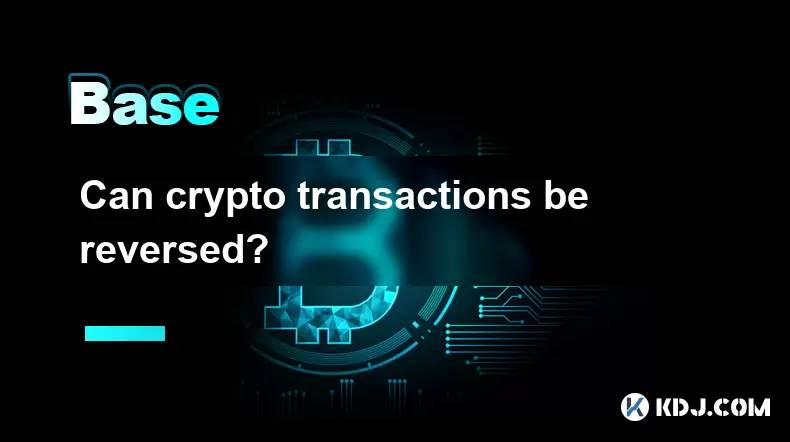
Can crypto transactions be reversed?
Aug 10,2025 at 01:35am
Understanding the Immutability of Blockchain TransactionsCryptocurrency transactions are built on blockchain technology, which is designed to be immut...
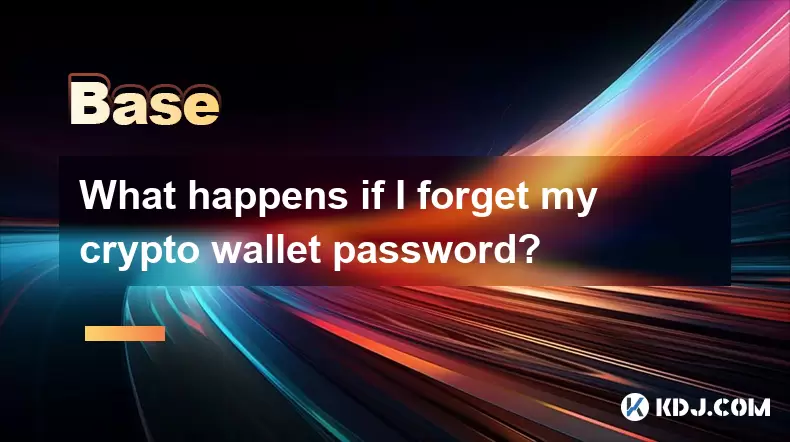
What happens if I forget my crypto wallet password?
Aug 09,2025 at 08:50am
Understanding the Role of a Crypto Wallet PasswordA crypto wallet password serves as a critical security layer that protects access to your digital as...
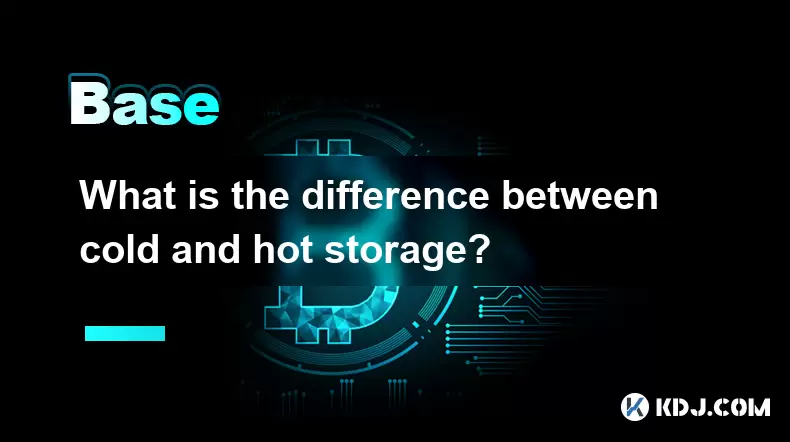
What is the difference between cold and hot storage?
Aug 12,2025 at 01:01am
Understanding Cold Storage in CryptocurrencyCold storage refers to offline methods of storing cryptocurrency private keys, ensuring they are not expos...
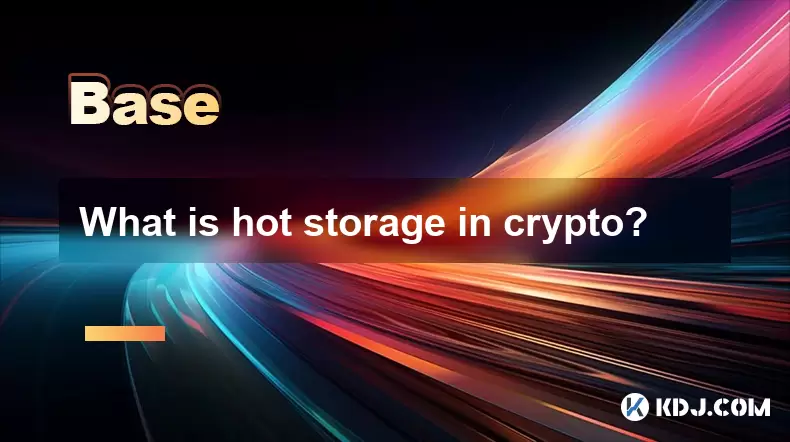
What is hot storage in crypto?
Aug 11,2025 at 07:08am
Understanding Hot Storage in CryptocurrencyHot storage refers to cryptocurrency wallets that are connected to the internet. Unlike cold storage soluti...

What is cold storage in crypto?
Aug 13,2025 at 11:35am
Understanding Cold Storage in CryptocurrencyCold storage in cryptocurrency refers to a method of storing digital assets offline, away from internet-co...

What is the best crypto portfolio tracker?
Aug 10,2025 at 05:08am
Understanding the Role of a Crypto Portfolio TrackerA crypto portfolio tracker is a digital tool designed to help investors monitor the performance of...

Can crypto transactions be reversed?
Aug 10,2025 at 01:35am
Understanding the Immutability of Blockchain TransactionsCryptocurrency transactions are built on blockchain technology, which is designed to be immut...

What happens if I forget my crypto wallet password?
Aug 09,2025 at 08:50am
Understanding the Role of a Crypto Wallet PasswordA crypto wallet password serves as a critical security layer that protects access to your digital as...

What is the difference between cold and hot storage?
Aug 12,2025 at 01:01am
Understanding Cold Storage in CryptocurrencyCold storage refers to offline methods of storing cryptocurrency private keys, ensuring they are not expos...

What is hot storage in crypto?
Aug 11,2025 at 07:08am
Understanding Hot Storage in CryptocurrencyHot storage refers to cryptocurrency wallets that are connected to the internet. Unlike cold storage soluti...

What is cold storage in crypto?
Aug 13,2025 at 11:35am
Understanding Cold Storage in CryptocurrencyCold storage in cryptocurrency refers to a method of storing digital assets offline, away from internet-co...

What is the best crypto portfolio tracker?
Aug 10,2025 at 05:08am
Understanding the Role of a Crypto Portfolio TrackerA crypto portfolio tracker is a digital tool designed to help investors monitor the performance of...
See all articles

























































































